What are Local Action Groups?
A Local Action Group (LAG) is a group or project focused on reducing the risks and impacts associated with invasive non-native species in a specific area.
LAGs come in a wide range of shapes and sizes. Some projects cover a county or region, while others focus on a single river catchment. The organic evolution of LAGs is partly due to the lack of interference from Government and national agencies. This has allowed a dynamic and growing network of LAGs to form, with LAGs now covering a large proportion of Britain.
What activities do they do?
The activities carried out by Local Action Groups are varied depending on the area they operate in. Common activities include:
- Carrying out management of invasive non-native species.
- Coordinating the efforts of local stakeholders carrying out invasive species management, to deliver a joined-up approach across a wider area.
- Raising awareness of invasive non-native species and their impacts amongst the local community.
- Sharing good practice with other groups and local stakeholders.
- Helping local stakeholders to improve their biosecurity practices.
Why are Local Action Groups important?
LAGs are invaluable in delivering sustainable, long term management of certain invasive non-native species at a local and regional level. They also carry out a huge amount of work to increase awareness of the risks and impacts associated with invasive non-native species amongst their communities, and have helped to bridge the gap between high-level policy and local stakeholders.
What are the benefits of joining a Local Action Group?
The work of Local Action Groups helps native species and habitats to recover, and members have reported added benefits to their own health and wellbeing through exercise, a better connection with nature, and meeting new like-minded friends. Read more about the experiences of Local Action Group volunteers.
How does the NNSS support the work of Local Action Groups?
The GB Non-native Species Secretariat (NNSS) supports the work of LAGs in a number of ways, for example:
- Holding an annual workshop for LAG staff and volunteers to exchange best practice and learn about GB-level progress and priorities.
- Sharing relevant updates and information through the LAG mailing list.
- Providing a toolkit of resources to help establish new LAGs and ensure the long term viability of existing LAGs.
- Providing free hard copies of materials to help with awareness raising.
Please contact us at nnss@apha.gov.uk if you have any other needs and we will try to help where we can.
How do I join a Local Action Group?
Check this list of Local Action Groups to find out what's available in your area. If you can't find anything close to you, contact us at nnss@apha.gov.uk.
How can my group join the Local Action Group network?
If you're already a member of a project working on invasive species, contact us at nnss@apha.gov.uk. You can find useful resources in our Local Action Group toolkit, and meet other Local Action Groups by joining the Facebook group, or by attending our annual Local Action Group workshop.
Defra review of Local Action Group achievement
From 2011 to 2015 Defra funded 29 Local Action Groups across England to tackle invasive non-native species in and around watercourses to reduce impacts on local communities, protect native biodiversity, and reduce the cost to our economy.
The Local Action Group Report (PDF) summarises the overall achievements of the funding, highlights successes and blockages to progress and makes recommendations as to what is required to achieve long term sustainability of these Groups. The report can be used by Local Action Groups as an objective evidence base to demonstrate how they can provide local, cost effective solutions to the management of harmful non-native species in the future.
